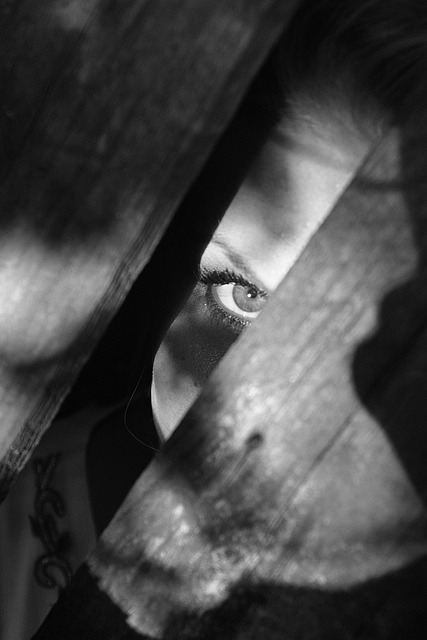The evil eye is a belief that certain individuals possess the power to cause harm or misfortune to others simply by looking at them with envy or ill intentions. This concept has been present in various cultures and religions throughout history. While some people consider the evil eye to be a form of bad luck, its existence and effects are subjective and vary depending on personal beliefs and cultural interpretations.
Table of Contents
The Origins and History of the Evil Eye
The evil eye is a concept that has been around for centuries, and its origins can be traced back to ancient civilizations. It is believed to be a curse or a form of bad luck that is cast upon someone through a malevolent glare. While it may sound like something out of a fairy tale, the belief in the evil eye is still prevalent in many cultures today.
The concept of the evil eye can be found in various cultures around the world, including ancient Greece, Rome, and the Middle East. In these cultures, it was believed that certain individuals had the power to cast the evil eye simply by looking at someone with envy or jealousy. This malevolent gaze was thought to bring misfortune, illness, or even death to the person on the receiving end.
The evil eye was not only believed to be cast by individuals, but also by objects. In ancient Greece, for example, it was believed that certain animals, such as snakes or scorpions, had the power to cast the evil eye. As a result, people would wear amulets or talismans to protect themselves from this curse. These amulets were often in the shape of an eye and were believed to ward off the evil eye.
The belief in the evil eye has persisted throughout history and has been passed down through generations. In many cultures, it is still common to see people wearing amulets or charms to protect themselves from the evil eye. These charms can take various forms, such as jewelry, keychains, or even small statues.
While the belief in the evil eye may seem superstitious to some, it is important to understand its cultural significance. For many people, the evil eye is not just a belief in bad luck, but a way to protect themselves and their loved ones from harm. It is a way to ward off negative energy and ensure good fortune.
In recent years, the concept of the evil eye has gained popularity in mainstream culture. Many celebrities and fashion designers have incorporated the evil eye symbol into their designs, making it a trendy and fashionable accessory. However, it is important to remember that the evil eye is not just a fashion statement, but a deeply rooted belief system for many people.
Whether you believe in the evil eye or not, it is fascinating to explore its origins and history. It is a concept that has stood the test of time and continues to be a part of many cultures around the world. So the next time you see someone wearing an evil eye charm, remember that it is not just a piece of jewelry, but a symbol of protection and belief in something greater than ourselves.
Common Beliefs and Superstitions Surrounding the Evil Eye

The evil eye is a concept that has been around for centuries and is deeply rooted in many cultures around the world. It is often associated with bad luck and misfortune, but is there any truth to this belief? Let’s explore some common beliefs and superstitions surrounding the evil eye.
One of the most prevalent beliefs is that the evil eye is a curse that can be cast upon someone simply by looking at them with envy or jealousy. This belief suggests that the negative energy emitted from the envious person can cause harm or misfortune to the recipient. Many cultures have their own ways of protecting against the evil eye, such as wearing amulets or charms, reciting prayers, or performing rituals.
In some cultures, it is believed that the evil eye can cause physical or emotional harm. People may experience headaches, fatigue, or even accidents as a result of being affected by the evil eye. This belief has led to the development of various remedies and rituals aimed at warding off the evil eye and protecting oneself from its negative effects.
Another common belief surrounding the evil eye is that it can bring about financial difficulties. It is believed that someone who is envious of another person’s wealth or success can inadvertently cause them to lose their fortune or face financial hardships. This belief has led to the practice of displaying certain symbols or objects, such as the Hamsa hand or the Nazar, to ward off the evil eye and protect one’s wealth.
While these beliefs may seem far-fetched to some, they are deeply ingrained in many cultures and have been passed down through generations. The fear of the evil eye and its potential consequences is taken very seriously by those who believe in its power. It is not uncommon to find people taking precautions to protect themselves and their loved ones from the evil eye, even in modern times.
However, it is important to note that the belief in the evil eye and its effects is not universally accepted. Many people dismiss it as mere superstition or folklore, attributing any misfortunes or bad luck to other factors. Skeptics argue that the evil eye is simply a product of human imagination and that its effects are purely psychological.
Regardless of whether one believes in the evil eye or not, it is undeniable that the concept has had a significant impact on various cultures and their traditions. It has shaped the way people perceive envy and jealousy, and has influenced the development of various protective rituals and symbols.
In conclusion, the belief in the evil eye and its association with bad luck and misfortune is deeply ingrained in many cultures. While some dismiss it as mere superstition, others take it very seriously and go to great lengths to protect themselves from its effects. Whether the evil eye is real or not, its influence on human behavior and culture cannot be denied.
Protective Measures Against the Evil Eye
The evil eye, a belief that certain individuals possess the power to harm others with a malevolent gaze, has been a part of various cultures for centuries. While some dismiss it as mere superstition, others take it very seriously. If you find yourself concerned about the evil eye and want to protect yourself from its potential effects, there are several measures you can take.
One common protective measure against the evil eye is wearing an amulet or talisman. These objects are believed to possess the power to ward off negative energy and protect the wearer from harm. Amulets can come in various forms, such as a pendant, bracelet, or even a small charm that can be carried in a pocket or purse. The most popular amulet for protection against the evil eye is the Nazar, a blue eye-shaped charm that is widely recognized across different cultures. By wearing an amulet, you can feel a sense of security and peace of mind, knowing that you have a physical object protecting you from the evil eye.
Another protective measure is the use of herbs and plants with reputed spiritual properties. In many cultures, certain herbs and plants are believed to possess the ability to repel negative energy and protect against the evil eye. For example, in Mediterranean cultures, it is common to hang bundles of herbs, such as basil or rosemary, near doorways or windows to ward off the evil eye. Burning certain herbs, such as sage or palo santo, is also believed to cleanse a space of negative energy. Incorporating these herbs and plants into your daily life can create a protective barrier against the evil eye.
In addition to physical objects and herbs, prayer and spiritual practices can also provide protection against the evil eye. Many religions and belief systems have specific prayers or rituals that are believed to ward off negative energy and protect against the evil eye. For example, in Islam, reciting specific verses from the Quran or wearing a protective amulet, known as a taweez, are common practices. Similarly, in Catholicism, wearing a crucifix or saying the Our Father prayer can provide protection. Engaging in these spiritual practices can help strengthen your faith and provide a sense of protection against the evil eye.
Lastly, it is important to cultivate positive energy and surround yourself with supportive and loving people. The evil eye is believed to be attracted to envy and negative emotions. By focusing on positivity and surrounding yourself with positive influences, you can create a protective shield against the evil eye. This can involve practicing gratitude, engaging in acts of kindness, and maintaining healthy relationships. By fostering a positive mindset and environment, you can minimize the potential effects of the evil eye.
In conclusion, whether you believe in the evil eye or not, taking protective measures can provide a sense of security and peace of mind. Wearing amulets, using herbs and plants, engaging in prayer and spiritual practices, and cultivating positive energy are all ways to protect yourself against the potential effects of the evil eye. Ultimately, it is up to you to decide what measures resonate with you and bring you a sense of comfort. So, take the necessary steps to protect yourself and embrace a life free from the worries of the evil eye.
Cultural Variations and Interpretations of the Evil Eye
The evil eye is a concept that has been present in various cultures for centuries. It is often associated with bad luck and misfortune, but its interpretation can vary greatly depending on the cultural context. In this article, we will explore the different cultural variations and interpretations of the evil eye.
In many Middle Eastern and Mediterranean cultures, the evil eye is believed to be a curse caused by envy or jealousy. It is believed that someone who possesses the evil eye has the power to harm others simply by looking at them with envy. This belief is deeply ingrained in these cultures, and many people take precautions to protect themselves from the evil eye.
One common way to ward off the evil eye is by wearing a talisman or amulet, often in the form of an eye. These amulets are believed to have the power to repel the negative energy associated with the evil eye. They can be found in various forms, such as jewelry, keychains, or even painted on walls and doors.
In some cultures, the evil eye is also believed to be a form of supernatural power. It is thought that certain individuals possess the ability to cast the evil eye intentionally, causing harm to others. These individuals are often feared and avoided, as their gaze is believed to bring bad luck and misfortune.
However, not all interpretations of the evil eye are negative. In some cultures, the evil eye is seen as a form of protection rather than a curse. It is believed that the evil eye has the power to ward off evil spirits and protect against harm. In these cultures, people may wear amulets or use other protective measures to harness the power of the evil eye for their own benefit.
The evil eye is not limited to the Middle East and Mediterranean regions. It is also present in other cultures around the world, albeit with different interpretations. In India, for example, the evil eye is known as “nazar” and is believed to be caused by the malevolent gaze of others. To protect against the evil eye, people may wear black kohl or tie a black thread around their wrists or necks.
In Latin American cultures, the evil eye is known as “mal de ojo” and is believed to be caused by envy or admiration. It is believed that the evil eye can cause illness or misfortune, but it can also be unintentional. To protect against the evil eye, people may wear red bracelets or carry red chili peppers.
In conclusion, the evil eye is a concept that has different interpretations and cultural variations. While it is often associated with bad luck and misfortune, its meaning can vary greatly depending on the cultural context. Whether seen as a curse or a form of protection, the evil eye continues to be a fascinating and deeply rooted belief in many cultures around the world.
Conclusion
In conclusion, the belief in the evil eye varies across different cultures and traditions. While some consider it to bring bad luck and misfortune, others view it as a form of protection against negative energy. Ultimately, whether the evil eye is considered bad luck or not depends on individual beliefs and cultural perspectives.
For licensing reasons, we must provide the following notice: This content was created in part with the help of an AI.



